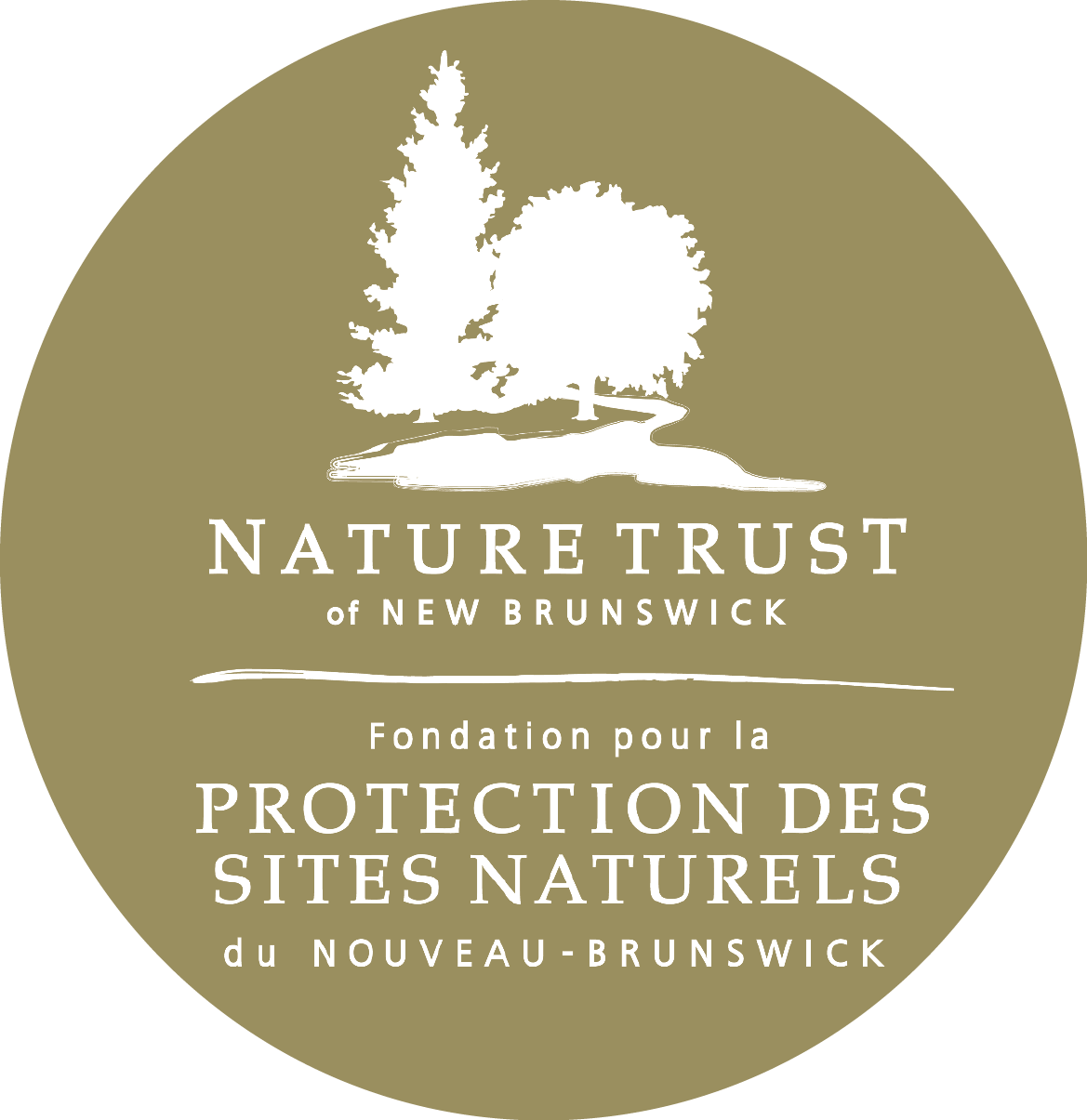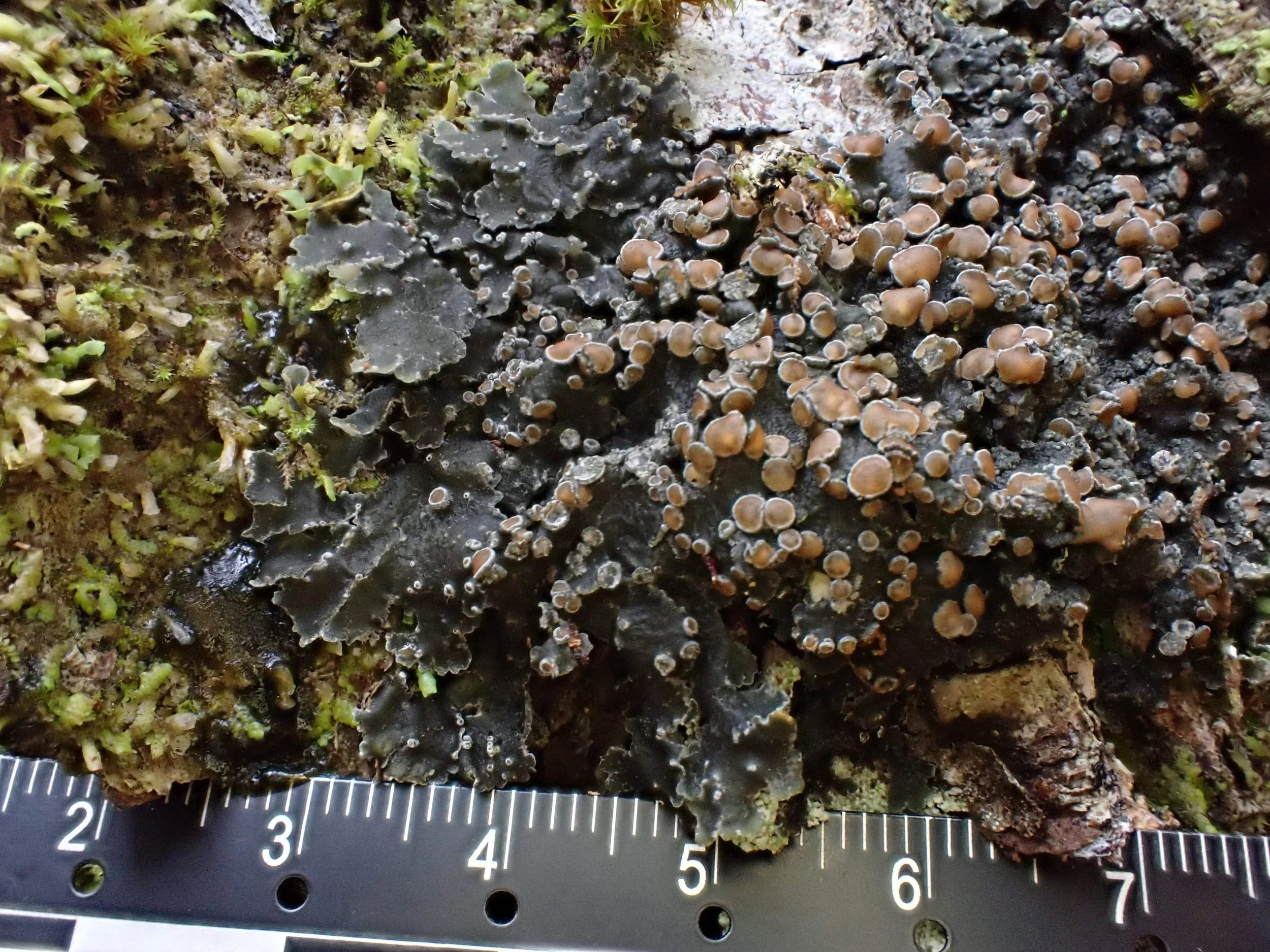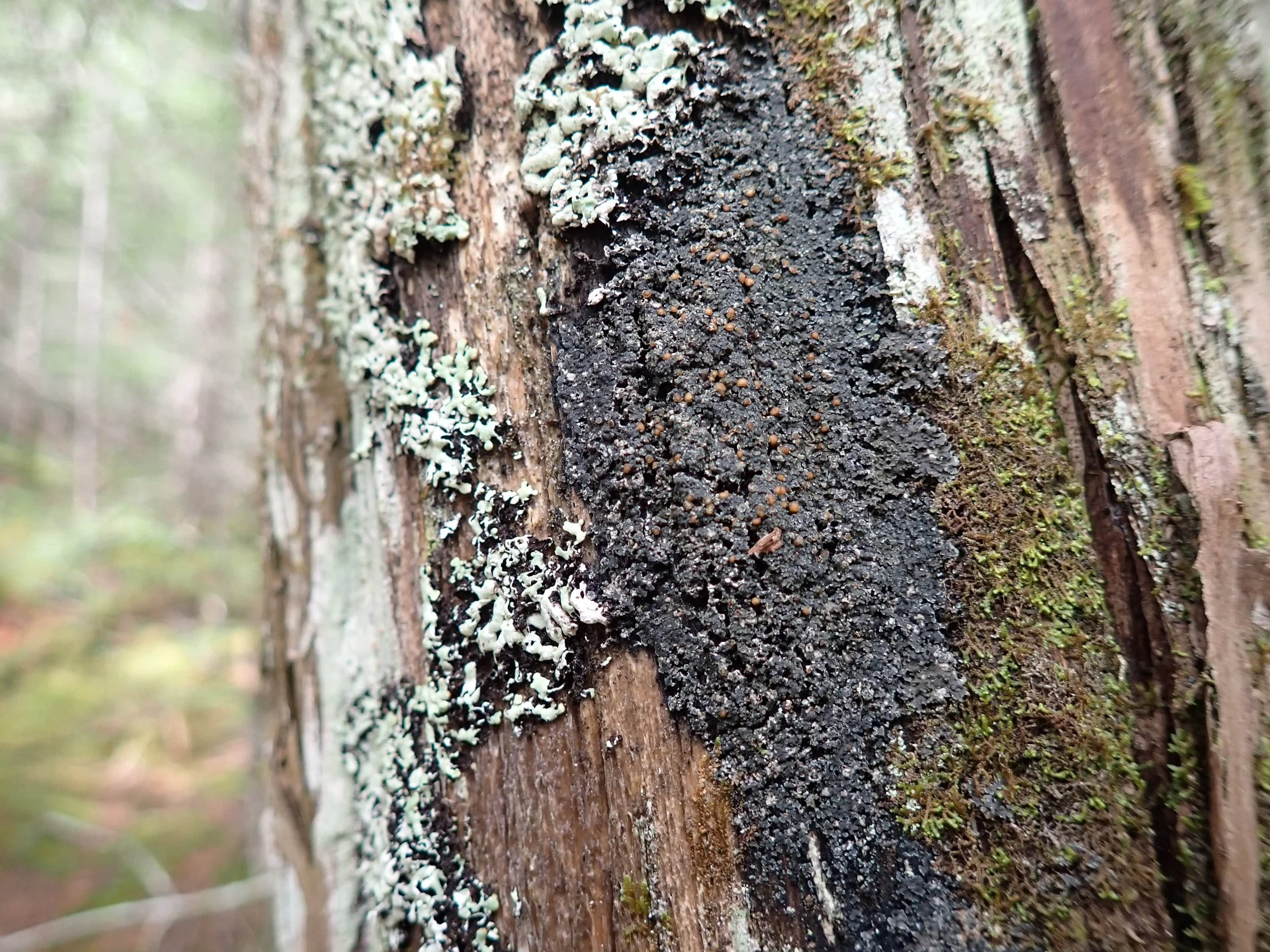The weird and wonderful world of lichens
The weird and wonderful world of lichens
Lauren Aarts tells us about her life as a wrinkled shingle lichen hunter and the Nature Trust’s work to help landholders in New Brunswick learn more about, and help better protect, the natural wonders in their own backyard.
WRITTEN BY LAUREN AARTS, FORMER CONSERVATION COORDINATOR
I’ll never forget the cool, cloudy day last September when I trudged through a wet, swampy forest thinking it was going to be like every other lichen survey I’d done. Was I ever wrong.
As the team and I made our way through the mossy puddles, thick bush and fern-covered understory of the Charlotte County property, we kept a keen eye for any signs of the elusive, rare lichen so weirdly named the ‘wrinkled shingle’ lichen.
My heart leapt as I spotted the first one. We set to work meticulously recording details of the palm-sized specimen. Glancing around, I spotted another lichen, and then another, and another!
On most survey days, I’m lucky to find one or two of these rare organisms. But on this day, the sightings just kept coming as we found ourselves in the middle of the richest habitat for wrinkled shingle lichen I'd yet encountered.
It was the most rewarding day of field work I’d ever had, but what made the discovery even more exciting happened a bit later that year, when The Nature Trust helped establish this land as a protected area under the province’s Nature Legacy initiative.
Lauren Aarts examining a wrinkled shingle lichen specimen in a forest in Charlotte County.
To this day, I feel a deep sense of pride knowing that this large colony of rare lichens is forever protected in that enchanting red maple swamp. It’s just one positive outcome of the Nature Trust’s Species at Risk Lichen Project.
Launched in 2020, the project aims to idenfity and recover two rare and threatened lichen species in the Skutik (St. Croix) watershed: the white-rimmed shingle lichen (Fuscopannaria leucosticta) and the wrinkled shingle lichen (Pannaria lurida).
You may be surprised to learn that lichens are neither plant nor animal. They are incredibly complex organisms made up of two parts: fungi and algae.
It's a common misconception that lichens kill or harm trees. In fact, they only use the tree as a surface to live on, getting everything they need from photosynthesis, rainfall, and the air.
They are an essential fixture of a healthy forest as they provide food, camouflage, nesting material, and homes for many species of wildlife. They also enrich the soil when they die and are used in Indigenous medicines.
Lichens are so sensitive to air and water quality that a noticeable decline in their numbers can alert us to rising pollution levels and acid rain.
No matter how many I see, it's always exciting to spot the white-rimmed shingle lichen, often found resting on the upper trunks of eastern white cedar trees.
This scaly black lichen with white tips and bright orange spots loves to live in swamps with wet, mossy ground.
The wrinkled shingle lichen, on the other hand, prefers wet, mixedwood forests and makes its home on the trunks of black ash, red maple, and, sometimes, eastern white cedar trees. This dark grey lichen is often palm-sized with a wrinkly surface and the same bright orange spots.
Forested wetlands provide an abundance of microclimates and microhabitats perfect for lichens and other rare species. Some of the exciting sightings we’ve had while conducting lichen surveys include the beautiful orchid showy lady’s slipper (Cypripedium reginae), and the threatened Canada warbler (Cardellina canadensis).
These wetlands, of course, are also important in and of themselves, helping to mitigate flooding, improve drinking water quality, and storing climate-change causing carbon in trees, understory plants, and soil.
These habitats are increasingly rare in our province due to clearcutting. That's bad news for lichen in particular because, once their habitat is disturbed, these sensitive organisms are unlikely to re-establish.
That's where our project comes in. We've already established two nature preserves sheltering rare lichen habitat, are working on a third this year, and the data we're collecting will be used to develop recovery strategies for newly discovered lichen populations.
Another goal is to help our friends and allies with the Peskotomuhkati First Nation at Skutik (Passamaquoddy Recognition Group) plan and carry out similar projects. This involves supporting the Peskotomuhkati’s efforts to steward their traditional territory and establish Indigenous Protected and Conserved Areas (IPCAs).
Many of the habitats required by these threatened lichens are found in private woodlots, so we rely on our connections with New Brunswickers who are passionate about taking good care of the land.
Wrinkled shingle lichen.
To date, we've connected with more than 50 people whose land holds high potential for lichen habitat.
After getting permission from the landholder, we visit their property to search for lichens and any other rare species we can find, recording sightings, habitat features and any signs of disturbance.
Sometimes we get the chance to walk through the property with the landholders, which is always such a treat to learn from people who have a personal connection to the land.
I remember one day walking with a woman whose woodlot had been in her family for generations. She knew so much about the history of the land but was still so excited to learn that her woodlot was even more special than she’d realized.
White-rimmed shingle lichen.
I especially remember her eyes lighting up as I showed her the rare lichens that called the property home.
“I must have walked by these so many times and never knew they were something so important!” she exclaimed. I just love meeting people who get as excited about lichens as I do!
On the thrilling occasion that we find a rare lichen, we collect information on its location and habitat and carefully note any immediate or foreseeable threats to its survival. We work closely with a lichen expert at the New Brunswick Museum to confirm the identification.
We also welcome interested landholders to enroll in our Conservation Partners Program, a great initiative which provides resources and guidance to landholders who want to learn how they can manage their woodlot to better maintain its unique wildlife habitat, sensitive areas and rare species.
We give interested landholders a description of what species we’ve found on their property, a map highlighting areas of important lichen habitat for conservation, and suggestions to help maintain any rare species and their habitat.
It is always so rewarding to connect with New Brunswickers who care so much about biodiversity and healthy ecosystems and who want to do their part for conservation.
I’m proud to contribute to a cause that helps protect such important habitats and species at risk—and I’ve definitely gained a new appreciation for the weird and wonderful world of lichens.
This lichen at risk project was made possible with the support of the NB Wildlife Trust Fund.





